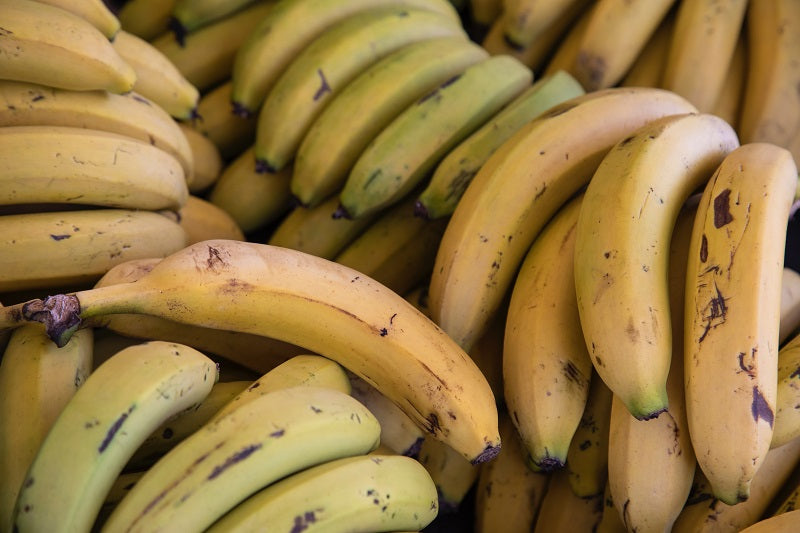Zero Waste in the Kitchen – How to Avoid Wasting Food Vol. II
In Poland, approximately 4.8 million tons of food are wasted each year. This fact is especially alarming given the hunger and extreme poverty that coexist in our society. The problem of food waste is not only an ethical issue but also an environmental threat, as it represents the overexploitation of the earth. So, how can you prevent food waste from your own kitchen and contribute to this difficult mission? Find out in this article.
Collect information
One of the United Nations Sustainable Development Goals, outlined in the 2030 Agenda document, is to halve food waste by 2030. In Poland, the PROM (Programme for Rationalization and Reduction of Food Waste) research project was conducted from September 1, 2018, to August 31, 2021. According to PROM research, we, the consumers, waste the most, up to 60% of all food. About 3 million tons of food are thrown away in Polish households every year, so we can boldly say that we have a real impact on whether the situation changes for the better. The PROM project is led by the Association of Polish Food Banks—their website features highly accessible research reports, detailed advice in the form of articles, and a free e-book on a planetary diet—one that aims to serve our planet rather than overexploit it.
Sharing food
Although the food banks mentioned above usually accept food from producers, retail chains, and farmers, food collections are also organized from time to time, where individuals can donate what they don't use or volunteer. If we run out of food, it's also worth contacting local restaurants and other relief centers. One of the latest initiatives against food waste is Foodsharing. How does it work? Jadłodzielnia, which mostly means simply refrigerators, can be found in larger cities throughout Poland. A map with the nearest location can be found on the official foodsharing group on Facebook, where detailed rules of conduct are also described. The important thing is that anyone can use such a refrigerator. Let's share with family and friends too, because food is the only thing that unites when shared!
Composting and fertilization
Composting is essentially organic recycling. Sounds great, right? Especially since this kind of organic recycling can be practiced by everyone—in the garden, on the balcony, or in the apartment. Apparently, about 70% of our waste is biodegradable, which means we have plenty of room to show off. What can be composted? Vegetable and fruit peels and leftovers (that we don't use for broth or cocktails), coffee and tea grounds, eggshells. What doesn't belong in the composter? Fatty and salty food scraps, meat, and bones. There are other, simpler solutions, too. An easy way to make homemade fertilizer for potted plants? Soak banana peels in very warm water and let it steep for at least 24 hours. You can also use water from boiling vegetables to water indoor plants, but only unsalted!
Ugly fashion
According to the research report conducted as part of the aforementioned PROM project, half of Poles do not choose to buy poor-looking or poorly packaged, but still healthy, products. It has long been known that people tend to prefer what is appealing to the eye. For this reason, we spend a long time in stores choosing the roundest tomatoes and the plainest carrots. And yet, these "uglier" vegetables and fruits can be just as delicious and healthy as the prettiest! Before buying, consider what you plan to use the product for; a slightly wilted bell pepper is good for healing, and a crooked carrot is good for salads. It's a bit like bananas—how are those lying alone worse than those in a nice bunch? Let's express the fashion of ugliness—let's buy lonely bananas and crooked carrots; after all, it's what's inside that counts!
Use until the end
In the first part of the article about zero-waste in the kitchen, there was a rather radical idea for using a broccoli stalk. It's nothing compared to how you can use a watermelon. It turns out that its rind is edible, although we're talking about its light green part—the outer, dark green part should be cut off. What can you make from watermelon rind? Jam, chutney, as well as pickled, marinated, or candied. What you don't use in the kitchen can also be successfully moved to the bathroom and used for skincare. Coffee grounds scrub is so popular that it doesn't need to be written about, although you can also make such a homemade scrub from sea salt or sugar that you don't use (because it accidentally ended up on the floor, for example).
There are many ways to effectively reduce food waste at home. If we want to implement new zero-waste habits, we should constantly ask ourselves new questions, look for solutions that are convenient for us, and discuss and educate each other about the need to reduce the amount of food wasted when sharing a meal... from leftovers.
THE PUBLISHER'S CHOICE
Almonds 1 kg BIOGO
- €11,69
€13,75- €11,69
- Unit price
- / per
Walnuts 800 g BIOGO
- €8,65
€10,18- €8,65
- Unit price
- / per
Dried organic mango 400 g BIOGO
- €10,99
- €10,99
- Unit price
- / per
Dried White Mulberries 500 g ORGANIC
- €5,84
€6,87- €5,84
- Unit price
- / per
Dried organic figs 800 g BIOGO
- €30,12
- €30,12
- Unit price
- / per
Unpeeled buckwheat groats 1 kg BIOGO
- €2,81
€3,31- €2,81
- Unit price
- / per
Organic coconut flakes 500 g BIOGO
- €10,07
- €10,07
- Unit price
- / per
Organic oat flakes 600 g BIOGO
- €3,77
- €3,77
- Unit price
- / per
Organic cashew nuts 1 kg BIOGO
- €19,99
- €19,99
- Unit price
- / per
Milk thistle seeds 1 kg BIOGO
- €3,99
- €3,99
- Unit price
- / per









































































































































